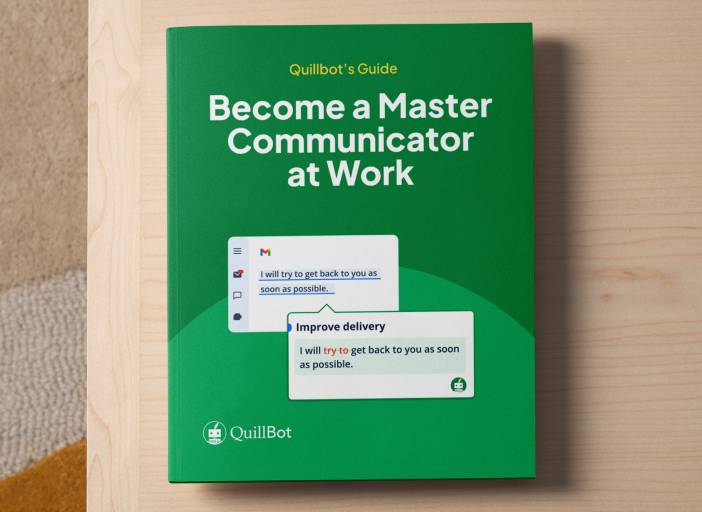UGC Meaning | Definition, Context & Examples
UGC, meaning “user-generated content,” is content created by users of a brand and is often incorporated into the brand’s content strategy.
QuillBot’s free TikTok script generator can help TikTokers create even more compelling content that’s likely to get noticed by brands.
What is UGC (user-generated content)?
UGC is any content created by unpaid users or customers of a brand rather than the brand itself. UGC can be organic (the customer creates it on their own) or solicited (the brand requests or prompts it).
UGC comes in many formats, like:
- Customer reviews and testimonials
- Photos and videos posted by customers
- Social media posts mentioning or tagging a brand
- Blog posts about products or services
- Unboxing videos or tutorials created by customers
- Forum posts or discussions about the brand
Unlike traditional marketing content produced by the brand, UGC comes directly from the audience, making it more authentic in the eyes of consumers. This content is often incorporated into a brand’s marketing strategy to build trust and engagement.
Due to this, UGC can sometimes be confused with other types of content, but there are some subtle differences to be aware of. The table below compares UGC with branded content, influencer marketing, and more.
| UGC | Branded content | Content marketing | Influencer marketing | |
| Purpose | Authentic user expression | Controlled brand storytelling | Educate, engage, or sell | Leverage influencer audience and trust to promote brand |
| Creator | Users and customers | Brand, agency, or hired creators | Brand or agency | Influencers (paid or unpaid) |
| Brand control over content | Limited | Full | Full | Partial (depends on contract) |
| Typical format | Social posts, videos, reviews | Videos, articles, interactive content | Blogs, videos, newsletters, social posts | Social posts, videos, stories |
| Trust factor | High (peer-to-peer) | Medium to high | Medium | High (depends on choosing the right influencer) |
| Compensation methods | Usually not paid | In-house, agency costs, or creator contract | In-house or agency costs | Paid contracts or free gifts |
What is a UGC creator?
A UGC creator is someone who produces content featuring or about a brand voluntarily or through partnerships. These creators are often regular users or fans who share their genuine experiences.
UGC creators can also be paid by brands to create UGC. This payment could be money or free products. For example, a clothing brand might send free clothes to a UGC creator, hoping they will make content about it. This strategy is called “product seeding.”
It’s easy to get confused between UGC creators and influencers, and since the social media marketing industry is constantly evolving, it’s difficult to pin down a definition of each. But, generally speaking:
- A UGC creator may not have a large following and produces content that is generally less polished than an influencer. They may post the UGC on their own feed or create it for the brand to publish instead. They may or may not get paid, and that payment is sometimes in the form of gifted products.
- An influencer has a large following (around 10K+) and typically produces highly polished, aesthetic content. When collaborating with brands, they almost always post their content to their own feed. Influencers have an influence over consumer purchasing decisions, and therefore, may also hold more sway with the brand when it comes to deciding what type of content to create, how, when, and for how much. They are almost always paid. They may exchange free gifts in lieu of payment, but the value of the gift must align with the influencer’s rates.
To sum up, some influencers may create UGC, but not all UGC creators have influencer status.
The benefits of UGC
User-generated content offers brands various benefits, like:
- Authenticity and trust: UGC feels more genuine and trustworthy to consumers because it’s created by real people. It’s similar to “word of mouth” marketing.
- Better engagement: Users typically engage more with UGC than branded content, which boosts the brand’s stats on social media.
- SEO advantages: Fresh, relevant content created by users can contribute to improved rankings and organic traffic.
- More sales: Shoppers usually rely on peer reviews and recommendations, which makes UGC a powerful driver of sales.
- Audience insights: Through UGC content and how other users interact with that content (e.g., comments, likes, and shares), brands can better understand what their target audience likes and doesn’t like.
- Social proof: UGC provides validation that other people use and enjoy a product or service that a consumer might be considering. Moreover, UGC can usually be integrated with social commerce, meaning it reinforces this validation on social media or the brand’s website at the moment of purchase.
Best practices for UGC
If you’re a brand looking to leverage UGC, it’s important to implement a strategic approach. Follow these best practices to effectively manage and use UGC in your marketing efforts:
- Define your goal and strategy: Know what you want to achieve with UGC (e.g., increase engagement or drive sales) and make a plan for how to get there.
- Partner with the right creators: Choose collaborators or repost content from creators who align with your brand mission, values, and aesthetic.
- Ask for permission and give credit: Before reposting content from a creator, ask them if that is okay. When posting, credit the original creator properly.
- Provide clear guidelines: If you’re prompting UGC creators before they create the content, set expectations on content use, style, and permissions.
- Develop authentic messaging: Encourage UGC creators to tell genuine stories and share real opinions rather than producing scripted content.
- Strive for diversity: Showcase various voices and perspectives that align with the demographics of your target audience.
- Moderate content: Review content submissions and social comments to avoid inappropriate or damaging messaging.
- Track performance metrics: Measure the engagement, reach, and conversion of UGC to evaluate if it’s a strategy that works for your brand or not.
For UGC creators, follow these best practices when crafting your content:
- Be genuine: Share honest experiences and opinions. Audiences can usually tell when content feels forced or scripted, which reduces trust and engagement.
- Engage with your audience: Respond to comments or questions to boost engagement and demonstrate that you care.
- Get necessary permissions: Ensure you have the rights to use any third-party elements (music, images, locations) in your content.
- Communicate promptly and transparently: Keep open lines of communication during brand collaborations, especially regarding deadlines, deliverables, and usage rights.
- Understand the brand’s voice: Before creating content, familiarize yourself with the brand’s identity, messaging, and target audience to ensure your content resonates.
- Respect disclosure regulations: Be transparent about partnerships or sponsored content by following local laws and platform rules regarding disclosures and using hashtags like #ad or #sponsored.
- Be open to feedback: Stay flexible and willing to adjust content based on brand feedback without compromising your creative voice.
User-generated content examples
Below are some user-generated content examples across industries, showing how major brands successfully integrate it into their marketing.
| Brand | UGC | Description |
| Coca-Cola | Share a Coke campaign | Coca-Cola replaced its logo with people’s names and encouraged customers to share photos of themselves with their personalized Cokes using the hashtag #ShareACoke. It generated massive UGC on social media, fueling global engagement. |
| GoPro | Customer adventure videos | GoPro consistently features user-submitted videos filmed with their cameras. The brand also hosts awards for the best UGC, encouraging more high-quality submissions. |
| Starbucks | Red cup contest | Starbucks invites customers to decorate their iconic holiday red cups and share them on Instagram with #RedCupContest. Winners were featured, and Starbucks got a flood of seasonal, brand-aligned content. |
| Apple | Shot on iPhone campaign | Apple’s ongoing campaign features content shot on iPhones by users around the world. This turns real users into contributors and subtly demonstrates the product’s value. |
| ASOS | As Seen on Me campaign | ASOS encourages customers to share photos of themselves wearing ASOS clothing using the hashtag #AsSeenOnMe on Instagram. These posts are then featured on the ASOS website, especially on product pages, giving other shoppers styling ideas from real people. |
| LEGO | LEGO Ideas Platform | LEGO invites fans to submit their own designs online. If a design gets enough votes, it may become an official LEGO product, crediting the user and fostering strong community loyalty. |
Frequently asked questions about UGC meaning
- What is UGC in influencer marketing?
-
UGC in influencer marketing refers to content created by real people to discuss a brand and its products or services.
The meaning of UGC is “user-generated content.” The users who create UGC usually aren’t paid the same way influencers are. They also sometimes don’t share the UGC to their own feeds, but instead create it for the brand to publish.
Social media captions are often an important part of UGC. Why not try QuillBot’s free caption generator for Instagram to quickly write fun captions that get your brand noticed?
- What is a UGC video?
-
A UGC video is a video created by a real person to discuss the products or services of a specific brand.
The meaning of UGC is “user-generated content.” The “users” are the people who use the brand’s products or services and who create the content.
If you want to learn more about UGC video, QuillBot’s AI Chat can answer your questions.
- What’s a good user-generated content strategy?
-
A good user-generated content strategy is:
- Understand the meaning of UGC (user-generated content)
- Define your goal and UGC strategy
- Collaborate with the right creators
- Strive for authenticity
- Moderate content
- Track content metrics
- Evaluate if UGC works for your brand
If you want help developing a good user-generated content strategy, QuillBot’s AI Chat can help you through it.
Cite this Quillbot article
We encourage the use of reliable sources in all types of writing. You can copy and paste the citation or click the "Cite this article" button to automatically add it to our free Citation Generator.
Santoro, K. (2025, August 04). UGC Meaning | Definition, Context & Examples. Quillbot. Retrieved August 11, 2025, from http://qbot.seotoolbuy.com/blog/content-writing/ugc-meaning/

